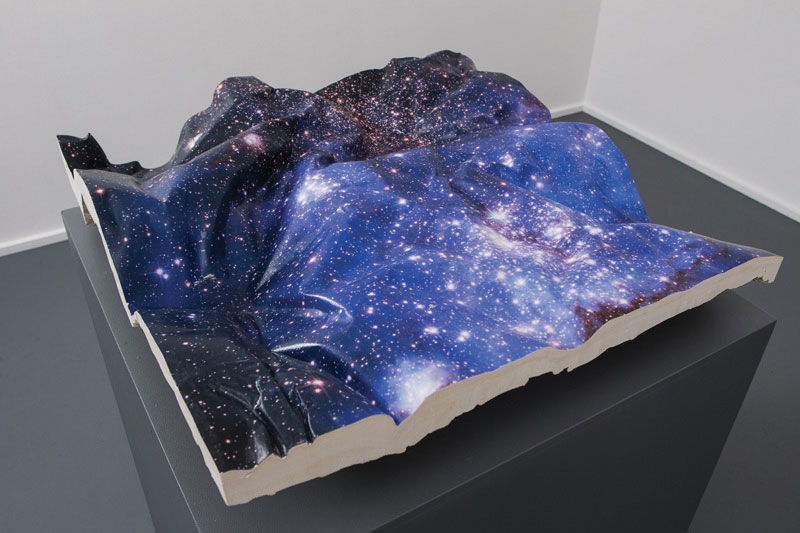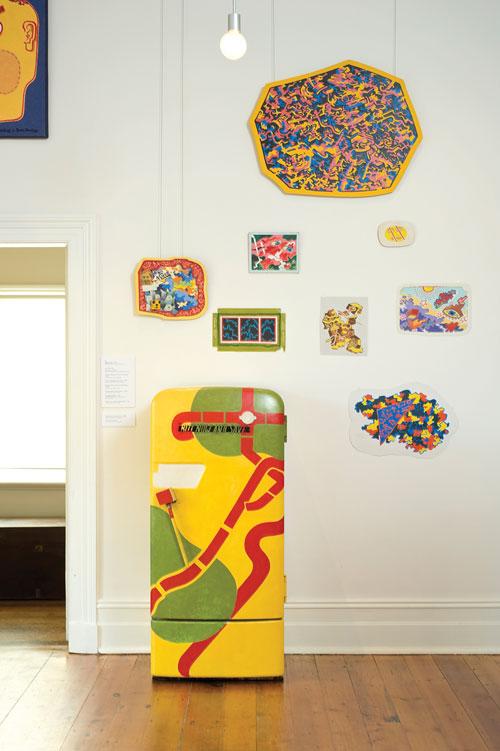
Speculative investigations into human perception and explorations of unknown territory were the focus of two recent concurrent solo exhibitions at the Contemporary Art Centre of South Australia (CACSA); Roy Ananda’s The Devourer together with Sandra Uray-Kennett’s A Knights Tour through a Rent in the Wall in the Project Space. The Devourer was the first installment in CACSA’s Manifest series, presenting solo exhibitions from winners of the Qantas Foundation Encouragement of Australian Art Award.
Though worlds apart in terms of theme and material practice, the pairing of these two exhibitions is clever programming, with both Ananda and Uray-Kennett exploring some common ground conceptually. Both exhibitions, in different ways, question the rules of human perception and our relation to the world around us. The edge of what we understand is fragile and mutable, and if we moved beyond this understanding the rules of logic may operate completely differently.
Ananda uses narrative, speculative process and explorative materiality to produce a series of investigations of space. Taking his cues from writer H.P. Lovecraft, science-fiction narrative becomes a way to explore ideas from beyond our cosmos. His process driven practice allows him to experiment with methods of rendering space – different manipulations of materials and objects that explore non-Euclidian geometry. Each work in this exhibition is a meditation on an uncertain universe.
In Hideous climb through the unfashioned realms Ananda presents a topological galaxy. In this work a digital print of an inter-stellar starscape forms the surface of a thick chunk of the universe. Crumpled and laid over a block of plaster, the surface properties of the print are maintained, despite the deformations of its shape.
The modular structure forms a central role within Ananda’s practice. Individual forms come together to build a larger shape, or a larger world. A rectangular box configuration in the back gallery allows the artist to take a regular and unaltered structure and manipulate it into a series of different spaces. Each box has the same dimensions, but through orientation and arrangement takes on a different atmosphere, which in turn affects how the object placed within its structure operates. The multiple skeletal boxes are simply made, some with closed-in edges. The boxes act as support, each contains a small work, not unlike a museum vitrine in its scale and duty. In Ananda’s world the supports take on a significant role, they become suprastructure – a para-text to the meaning of the work itself. They modulate the experience and allow objects to intrude and extrude from within perceived space.
Sandra Uray-Kennett’s A Knights Tour through a Rent in the Wall in the project space is an exploration of language, communication and madness. Uray-Kennett’s practice operates in unpredictable territories: like Ananda’s explorations of space at the edge of the unknown, she performs an exploration of communication at the very precipice. The edge is fragile, the unknown is immense.
In the Project Space the room is divided by a path of mirrors reflecting the roof alcove above. Three antique candelabras hang from the ceiling gable, each is different, but they are matched by a coating of white paint. The mirrors disorient and don’t always show what is expected; when walking directly alongside the path the candelabras are absent from the reflection. From other places in the room the candelabras are tripled – you can see them directly, in mirror, and in shadow. Uray-Kennett wants us to question what is present: which is spectre, which is figment and which is real.
The project is intensely driven by research, but equally contains aspects of personal experience and the artist’s own encounters with mental illness. In this work she seizes aspects of madness, the unpredictability of being with someone who thinks, sees and operates in a different way. The work is restrained, it quietly and obliquely talks about a difficult and misunderstood area of human experience. It is driven by encounters rather than narrative. In general Uray-Kennett’s work is sometimes opaque and difficult to enter, her practice takes the form of a set of enquires rather than statements. She encourages the viewer to experience and be affected, but acknowledges that they may never fully understand everything that is at play.
Uray-Kennett and Ananda both work in different ways to discuss concepts through their practices that are not easy to explain in words or diagrams. The Devourer uses multiple examinations and enquiries into space to uncover qualities that lie outside of perceptual rules. Uray-Kennett uses her work as a way for the viewer to encounter and experience the act of speaking at the edge of communication. Both use their art practices as a means to explore undefined territory.












